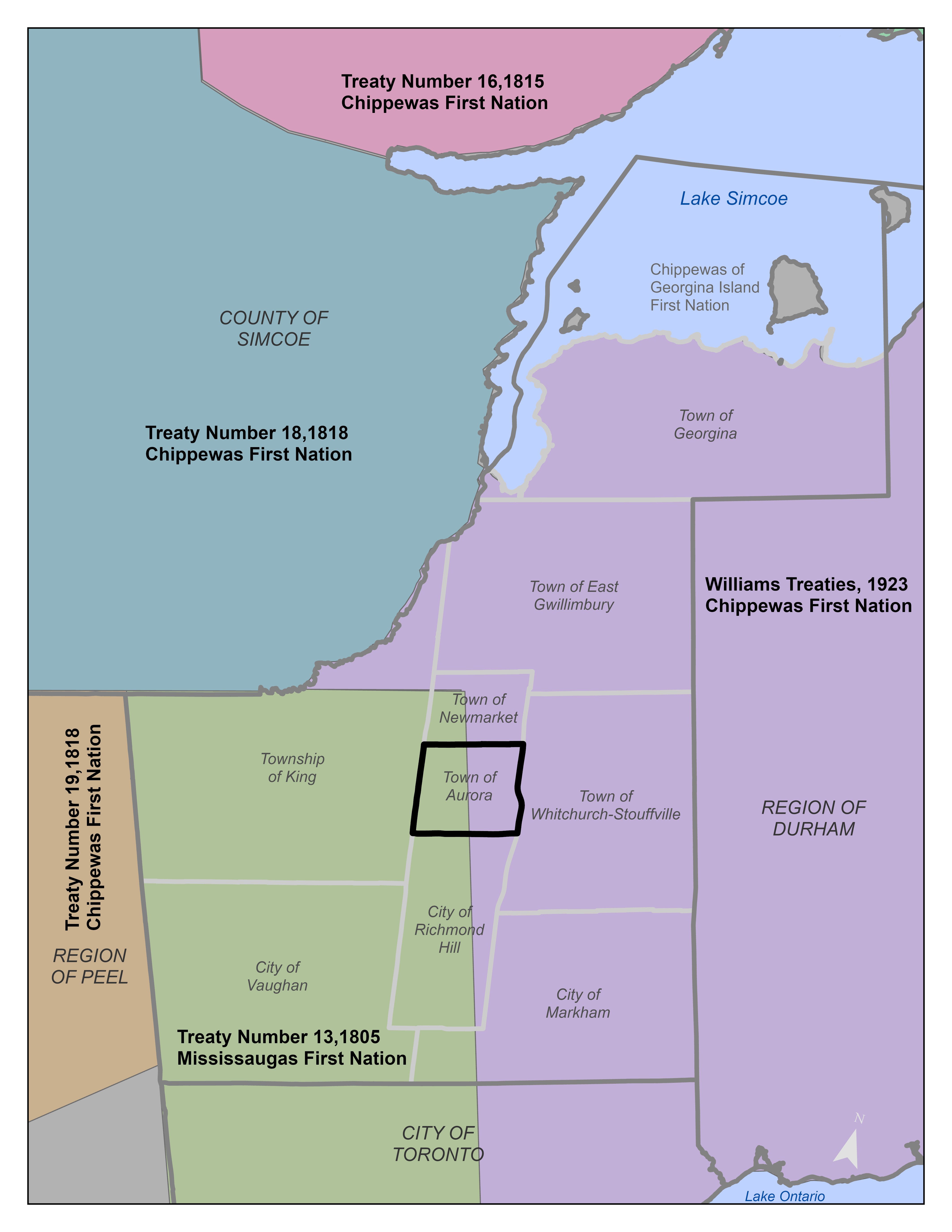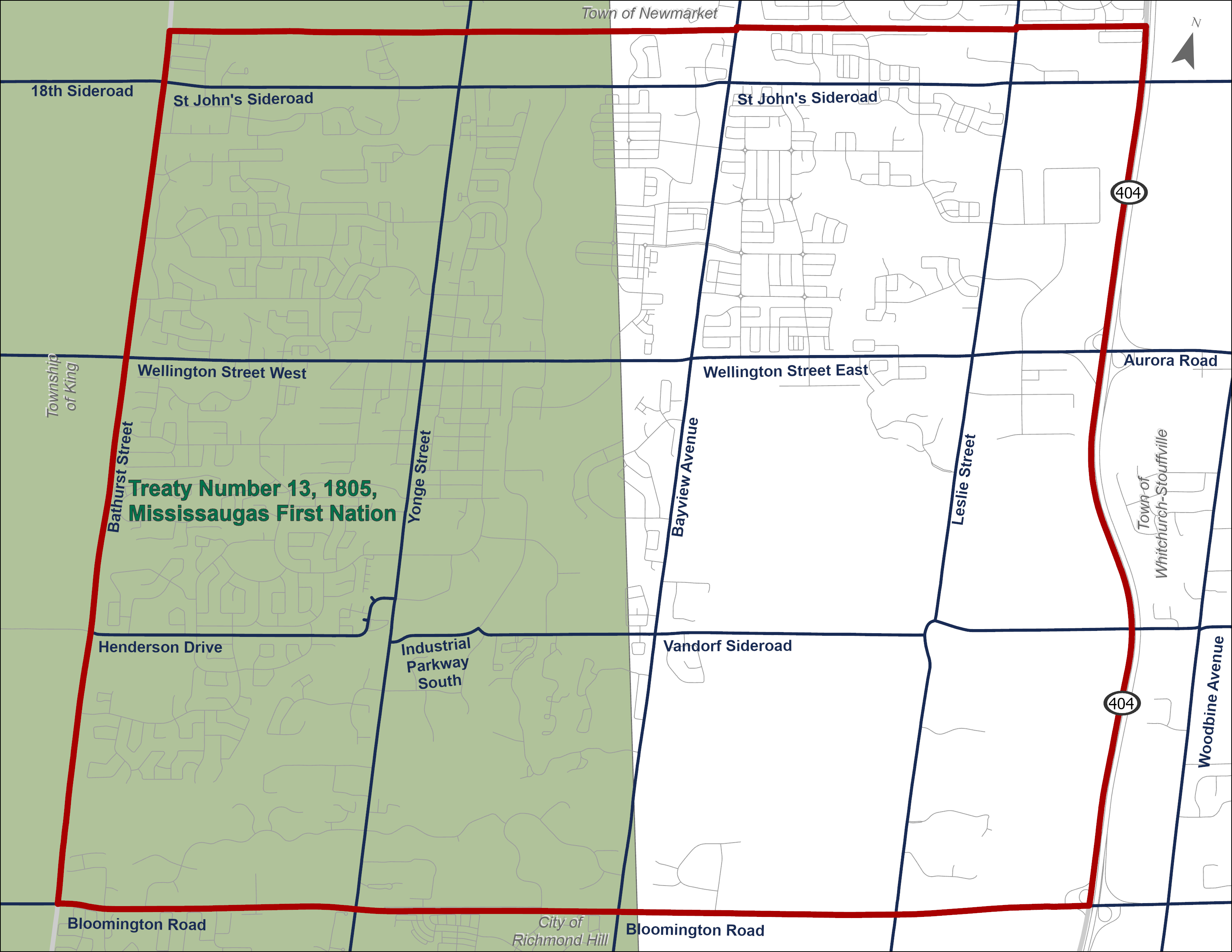In 2016, Ontario passed legislation declaring the first full week of November as Treaties Recognition Week with the goal of increasing awareness about treaty rights and relationships. This year, Treaties Recognition Week takes place from November 5 to 11. Learn more from Indigenous speakers about the importance of treaties, treaty relationships and rights in Ontario.
Curious what treaty your address is part of? Search for your address on an interactive treaty map.
First Nation Treaty Lands in York Region and Surrounding Areas

Treaties are legally binding documents that outline the relationship between Indigenous and non-Indigenous people. The Royal Proclamation of 1763 established the recognition of Indigenous rights and title in Canada including self-determination setting the stage for treaty negotiations. It forbade the settlement of British colonists on native lands and is enshrined in the Canadian Constitution (1982).
Canada, however, has not always upheld its end of the bargain forcing First Nations to seek remediation through the Canadian legal system. For most of the 20th century, the Canadian policy of assimilation and colonial practices to solve the “Indian Problem” stood in the way of swift resolution. Land claim negotiations continue to this day in areas that were never covered by a treaty, or where original treaty negotiations are questioned.
After the American Revolution there was a growing demand for land, which was granted as a reward for loyalty to the British Crown. The first land grants in Aurora date to 1797 and were issued to William McClellan and Thomas Phillips on the West side of Yonge, and to Charles Fathers, and Frederick Smith on the East side of Yonge. By 1806, most of the land on either side of Yonge Street in Aurora had been claimed.
The geospatial data was retrieved from the Office of Land Information Ontario (LIO) within the Ontario Ministry of Natural Resources and Forestry
The Town of Aurora acknowledges that the Anishinaabe lands on which we live and work are the traditional and treaty territory of the Chippewas of Georgina Island, as well as many other Nations whose presence here continues to this day. As the closest First Nation community to Aurora, we recognize the special relationship the Chippewas have with the lands and waters of this territory. They are the water protectors and environmental stewards of these lands, and as a municipality we join them in these responsibilities.
We further acknowledge that Aurora is part of the treaty lands of the Mississaugas and Chippewas, recognized through Treaty #13 as well as the Williams Treaties of 1923.
A shared understanding of the rich cultural heritage that has existed for centuries, and how our collective past brought us to where we are today, will help us walk together into a better future.



